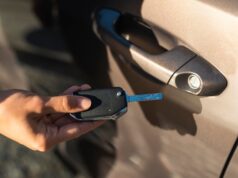
Buying a used car can be a challenging task, but with the right approach and some handy tips, you can navigate the process smoothly and find the one that meets your needs and budget.
In this guide, we’ll walk you through the essential steps to look for when buying a used car, making sure you’re equipped with the knowledge to make a smart purchase.
Determine Your Budget
Before you even start looking at cars, it’s crucial to know how much you’re willing to spend. Your budget will guide your search and help you avoid falling in love with a car that’s out of your price range.
The purchase price is just one part of the total cost. You should also consider insurance, maintenance, fuel, taxes, and fees.
Research the Right Car

Once you have a clear budget in mind, start researching different makes and models. A car checker can help you with this. Think about what you need in a car. Is it for commuting, family trips, or something else? Consider key factors such as make and model, mileage, features, and reviews.
Some brands are known for reliability, while others are celebrated for performance. Decide which features are must-haves and which you can live without. Online reviews and reliability ratings can provide valuable insights into the long-term satisfaction of other owners.
Check Vehicle History
When you find a vehicle that interests you, get its vehicle history report. This report provides crucial information about the car’s past, including accidents, title status, and service records.
You can obtain a vehicle history report from websites like Carfax and AutoCheck. All you need is the car’s Vehicle Identification Number (VIN). This step can reveal hidden issues that might not be apparent from a simple inspection or test drive.
Inspect the Car
Inspecting the vehicle in person is essential. While pictures can give you a good idea, they don’t tell the whole story. During your inspection, check for dents, rust, and paint inconsistencies on the exterior, as these can indicate past accidents.
Look for wear and tear on seats, pedals, and controls inside the car. Under the hood, inspect the engine for any signs of leaks, corrosion, or damaged hoses. Also, ensure the tires have even wear and a good amount of tread left.
Take a Test Drive

A test drive can reveal issues that you might not spot in a stationary inspection. Pay attention to how the car feels and performs during the drive.
Check for comfort and fit, test acceleration, braking, and handling, and listen for unusual noises or strange smells, which could indicate mechanical problems. Make sure all electronics, including lights, indicators, and the infotainment system, are working correctly.
Have a Mechanic Inspect It
Even if everything looks good to you, it’s wise to have a professional mechanic inspect the car. They can spot issues you might miss and provide an expert opinion on the vehicle’s condition.
A mechanic’s inspection can identify potential problems and give you leverage in negotiations. It can save you from costly repairs down the road and provide peace of mind that you’re making a sound investment.
Negotiate the Price
Don’t accept the sticker price without negotiating. Use the information you’ve gathered from your research and inspections to negotiate a fair price. Approach negotiations with respect but stand your ground.
Use resources like Kelley Blue Book to determine a fair price and point out any issues found during inspections to justify a lower offer.
Complete the Paperwork

Once you agree on a price, make sure all the paperwork is in order. This includes the title, bill of sale, and any loan documents if you’re financing the car. Ensure the title is clean and there are no liens against the vehicle.
The bill of sale should include the sale price and vehicle details. Register the vehicle in your name and get it insured before driving it home.
Final Checks Before Driving Away
Before you drive off with your new (to you) car, perform some final checks to ensure everything is in order. Double-check all necessary documents, do a quick final inspection, and confirm that all keys and remotes are working correctly.
These last-minute checks can help you avoid any surprises and ensure that you’re fully prepared to enjoy your new vehicle.
The Bottom Line
Buying a used car can seem overwhelming, but with these steps, you can navigate the process confidently.
By determining your budget, researching thoroughly, inspecting the car, and negotiating wisely, you’ll find a vehicle that suits your needs and budget. Remember, patience and diligence are key.



